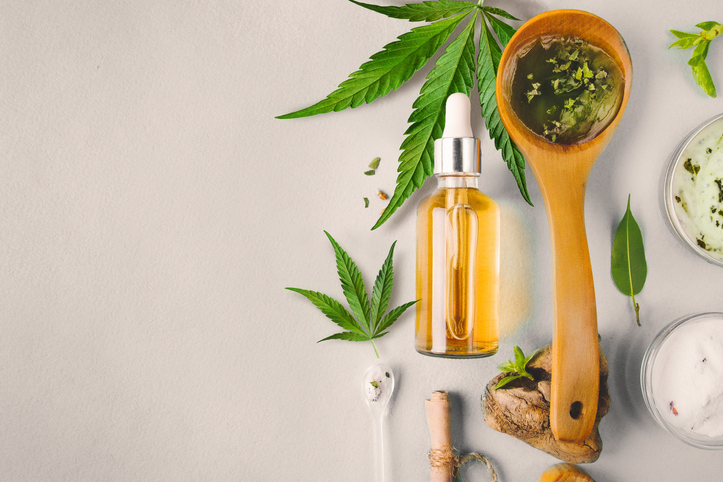Bioavailability of CBD oil is a hot topic in the cannabis community. Here is all you need to know about this important aspect of cannabinoid therapy. CBD oil is a popular form of treatment for many conditions, including chronic pain, anxiety, and epilepsy. But, how available is CBD to the body? And, what factors influence bioavailability? This article will explore these questions and more.
Bioavailability is the degree to which a substance is available to be used by the body. There are a few things to consider when looking at its bioavailability when it comes to CBD. The first is the method of delivery. CBD can be delivered through inhalation, ingestion, or topical application. The second consideration is the form of CBD. CBD can be found in oil form, tinctures, capsules, and edibles. The third consideration is the individual’s metabolism.
Table of Contents
What is bioavailability?
Bioavailability is how a drug or other substance is absorbed into a living system. The bioavailability of a drug can be affected by its chemical properties, the route of administration, and the individual’s health. Bioavailability is usually determined in clinical trials, where it is measured by calculating the area under the curve (AUC) of the concentration-time profile. Drugs with high bioavailability are more likely to produce desired effects in patients.
CBD’s bioavailability is important because it determines how well your body can make use of the CBD you’re taking. The more bioavailable a substance is, the more efficient your body’s use of it will be. So the better your CBD’s bioavailability, the better effects you’ll get from it.
That’s why we were so thrilled to discover that Blessed CBD‘s high-quality oils have an incredibly high bioavailability, which means that when you take them, your body quickly absorbs and uses all the CBD they contain.
How does the body absorb CBD oil?
CBD oil is absorbed into the bloodstream through the capillaries in the mouth and small intestine. The CBD is then transported to the liver, where it is metabolized into smaller molecules more easily absorbed by the body. The CBD molecule travels throughout the body, binding to receptors on cells that influence various functions.
Factors that affect CBD bioavailability:
CBD is a non-intoxicating cannabinoid that is found in cannabis. CBD interacts with the body through the endocannabinoid system. CBD has been shown to have many benefits, including reducing inflammation and anxiety.
How much the body absorbs, CBD depends on several factors, including the type of CBD product and the way it is consumed. When CBD is consumed in edible form, it is metabolized in the liver before being absorbed into the bloodstream. This process can reduce the amount of CBD available to interact with the body’s receptors. When CBD is inhaled or applied topically, it enters the bloodstream directly and does not undergo metabolism in the liver.
Other factors affecting CBD bioavailability include the dosage, frequency of use, and genetics.
CBD concentration:
There is a lot of CBD concentration products on the market. It can be hard to determine which product is best for you. It’s important to know how much CBD is in a product before purchasing it.
Products with a higher CBD concentration are more expensive, but they may be worth the investment if you seek relief from symptoms.
CBD concentration varies from product to product, so it’s important to do your research before buying. Some products have only trace amounts of CBD, while others have up to 200 milligrams per dose.
It’s important to find a product that fits your needs. If you’re looking for relief from chronic pain, you may want to look for a product with a higher CBD concentration. If you’re looking for general wellness, a lower concentration may be sufficient.
The form of CBD:
CBD comes in many different forms, including oil, drops, tinctures, and capsules. Some people find that one form works better for them than another. You may need to try a few different forms to see which one works best for you.
The route of administration:
The route of administration you choose for CBD will depend on your individual needs and preferences. Some people prefer to take CBD orally, while others find better results when they use it topically or inhale it as a vapor. Here’s a breakdown of the most common ways to take CBD:
Oral: CBD can be taken orally in tinctures, concentrates, capsules, or edibles. This is the most popular way to take CBD because it provides sustained relief throughout the day.
The bioavailability of the CBD:
CBD is a cannabinoid that is found in cannabis. Unlike THC, CBD does not have any psychoactive effects. This means that it does not get you high. CBD has been shown to have many benefits, including reducing anxiety and inflammation. However, CBD is not very bioavailable, meaning the body does not easily absorb it. This makes it difficult to achieve the desired effects. There are several ways to increase the bioavailability of the CBD, including using a carrier oil and taking it with food.
The size and weight of the person taking CBD:
The size and weight of the person taking CBD may affect how much CBD is absorbed into the bloodstream. Larger people may need more CBD to achieve the same results as smaller people. And, someone who weighs more will absorb CBD at a slower rate than someone who weighs less.
Genetic factors:
A range of genetic factors could influence how CBD affects you. For example, your genes could affect how quickly you metabolize CBD or how much CBD gets absorbed into your system. Additionally, some people may be more likely to experience side effects from CBD than others.
Methods of increasing CBD bioavailability:
One way to increase bioavailability is to consume CBD with food. CBD is absorbed more slowly by the body when taken with food and therefore has a longer-lasting effect. Another way to improve absorption is by taking CBD in capsule form. This bypasses the digestive system and goes directly into the bloodstream.
Another method of increasing bioavailability is to combine CBD with other cannabinoids. The combination of cannabinoids works together synergistically to produce a greater effect than anyone cannabinoid alone.
Conclusion:
In conclusion, CBD oil is available in many forms and can be ingested in various ways. It is important to consult with a healthcare professional before starting any CBD regimen to ensure that the oil is right for you and taking the correct dosage. CBD oil is effective in treating various conditions, and its bioavailability means that it is easy for the body to absorb and use.




